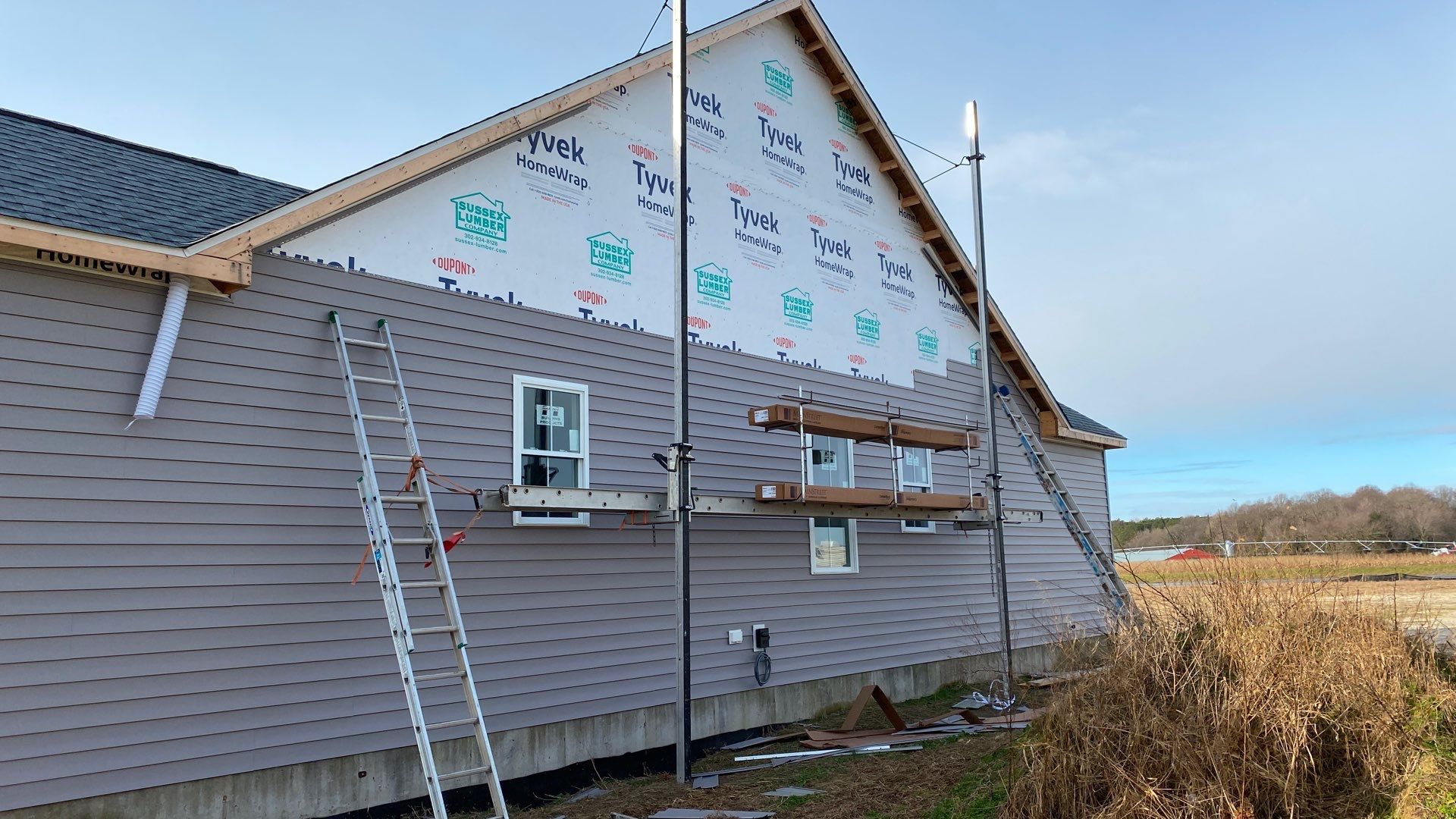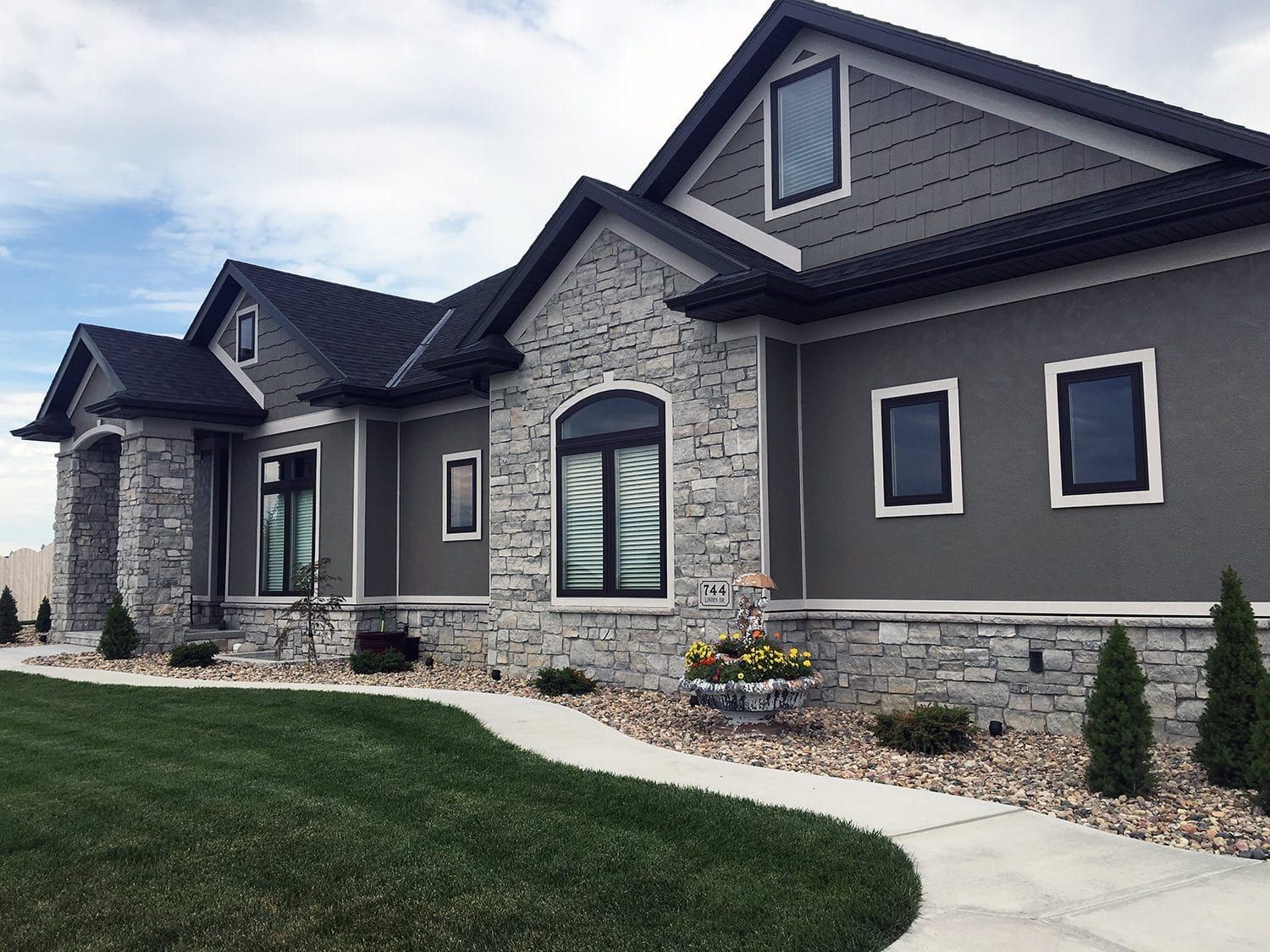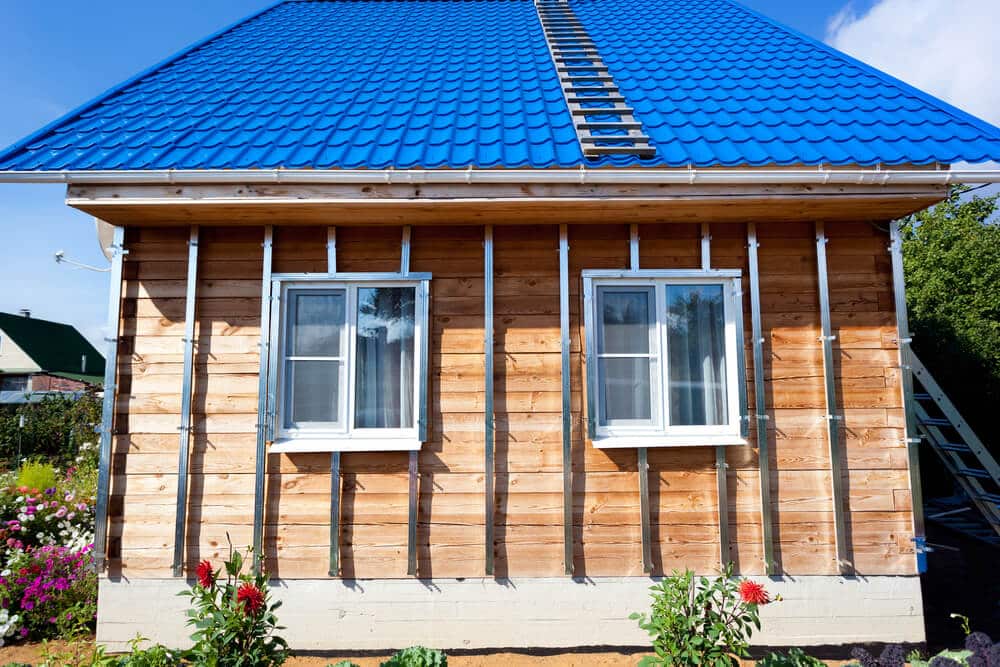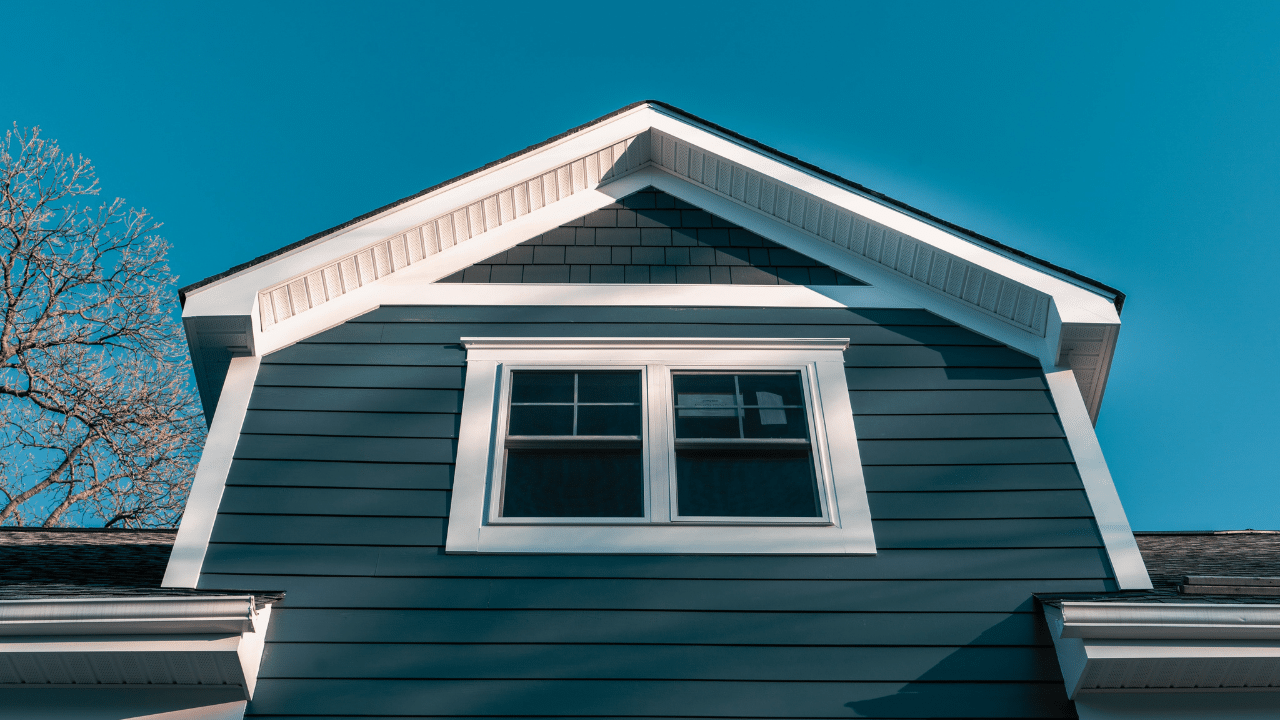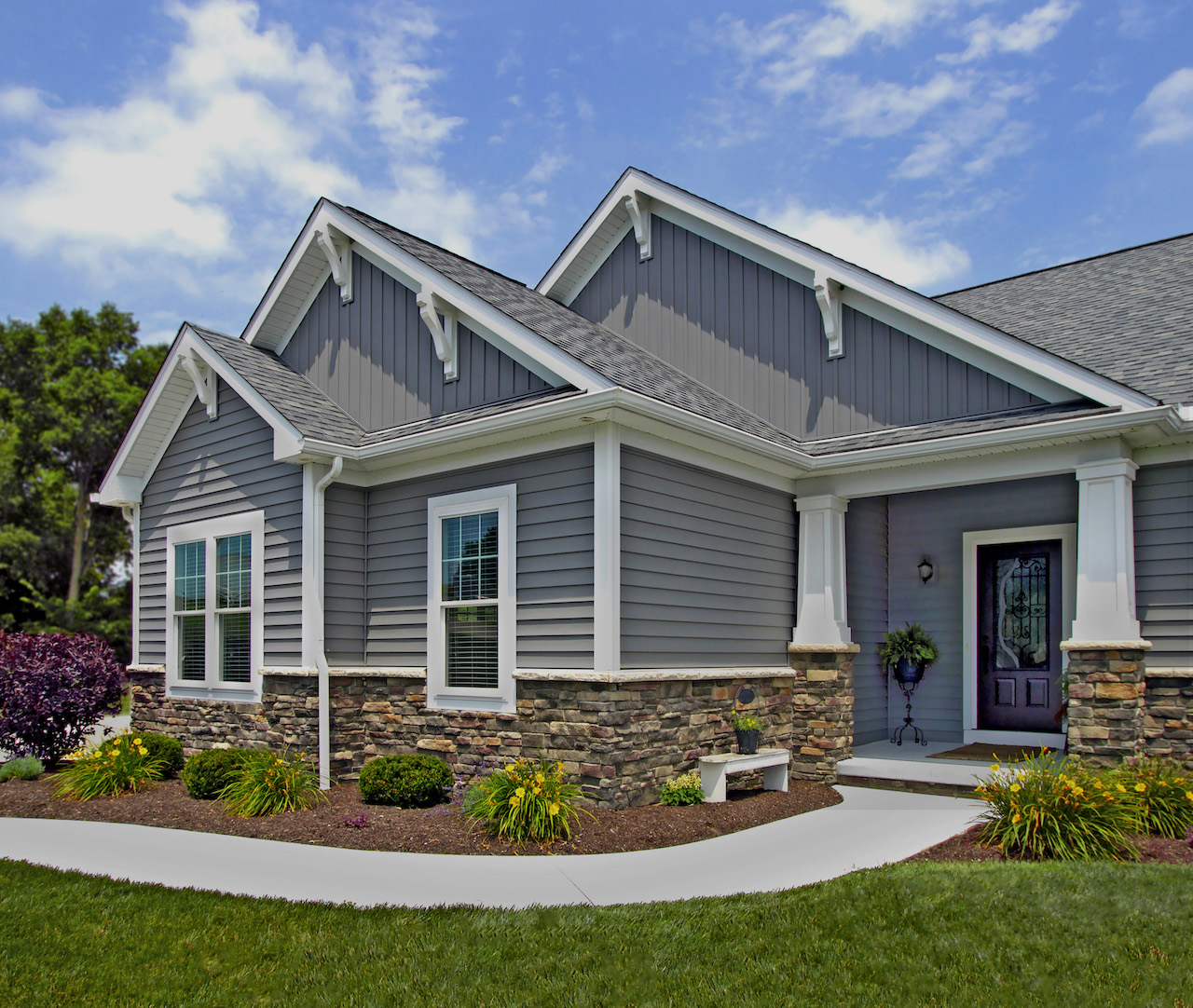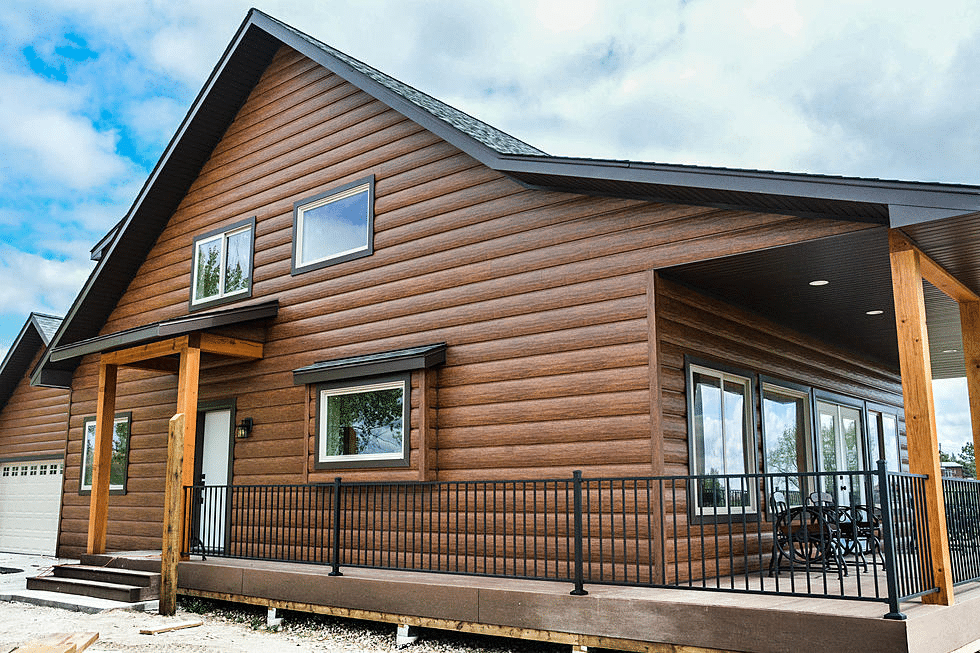Weather-resistant Insulated Siding: A Comprehensive Guide
Weather-resistant insulated siding offers a compelling blend of aesthetics, durability, and energy efficiency. This innovative exterior cladding protects your home from the elements while significantly reducing energy costs. We’ll explore the various materials, installation techniques, and long-term benefits to help you make an informed decision for your next home improvement project.
From understanding the thermal properties of different materials like vinyl, fiber cement, and engineered wood, to mastering proper installation techniques and ensuring weatherproofing, this guide provides a comprehensive overview. We’ll also delve into the cost-effectiveness, environmental impact, and long-term durability of this increasingly popular siding option.
Material Composition and Properties
Weather-resistant insulated siding offers a blend of protection and energy efficiency, achieved through careful material selection and manufacturing. Understanding the composition and properties of these materials is crucial for assessing their long-term performance and suitability for different climates and building types.
Common materials used in weather-resistant insulated siding include vinyl, fiber cement, engineered wood, and sometimes even a combination of these. Each material brings unique characteristics to the table, influencing the overall performance and cost of the siding.
Thermal Performance of Different Siding Materials
The thermal performance of siding is primarily measured by its R-value, which indicates its resistance to heat flow. Higher R-values signify better insulation. Vinyl siding generally offers a lower R-value compared to fiber cement or engineered wood options. For instance, a typical vinyl siding might have an R-value of around 0.5 to 1.0, while fiber cement siding may range from 0.2 to 0.5, and engineered wood siding can reach higher R-values depending on its core composition. The addition of an insulation layer significantly boosts the overall R-value of insulated siding, making it a more energy-efficient choice than traditional siding. For example, an insulated vinyl siding system could achieve an R-value of 4 or higher, offering substantial energy savings compared to its non-insulated counterpart.
Impact of Material Density on Weather Resistance
Material density plays a significant role in a siding’s ability to withstand harsh weather conditions. Denser materials generally exhibit greater resistance to impacts, wind damage, and moisture penetration. Fiber cement siding, for example, is known for its high density and durability, making it a preferred choice in areas prone to severe weather events like hurricanes or hailstorms. Conversely, less dense materials like vinyl siding might be more susceptible to damage from impacts or strong winds. However, advancements in vinyl formulation have led to improved impact resistance in recent years. The density of the insulation core also influences the overall performance of the insulated siding system. Higher density insulation generally provides better thermal performance and moisture resistance.
Manufacturing Processes of Weather-Resistant Insulated Siding
The manufacturing process varies depending on the specific material and design. For vinyl insulated siding, a process typically involves extruding a vinyl layer over an insulating foam core. The foam core can be made from materials like polyurethane or polyisocyanurate. The vinyl layer is then textured and colored to achieve the desired aesthetic appearance. Fiber cement insulated siding involves a different process. Cement, cellulose fibers, and other additives are mixed and formed into panels. These panels are then typically cured and potentially coated for enhanced weather resistance. Finally, engineered wood siding often involves layering different wood components or combining wood with other materials for enhanced durability and stability. An insulation layer might be integrated into the structure during the manufacturing process. Quality control measures at each stage of production are critical to ensuring the consistent performance and longevity of the finished product.
Installation Methods and Techniques
Installing weather-resistant insulated siding is a straightforward process when approached methodically. Proper installation ensures longevity, energy efficiency, and a beautiful, weatherproof exterior. This section details the steps, tools, and techniques for a successful installation.
Tools and Materials
A well-organized approach to installation begins with gathering the necessary tools and materials. Having everything readily available minimizes interruptions and improves efficiency.
| Tool | Material | Quantity | Purpose |
|---|---|---|---|
| Measuring Tape | Weather-resistant Insulated Siding | As per project requirements | Accurate measurements for cutting and placement |
| Level | Siding Nails or Screws | As per project requirements | Ensuring straight and even installation |
| Circular Saw or Siding Shear | Caulk | 1-2 tubes | Precise cutting of siding panels |
| Hammer or Drill | Flashing (metal or plastic) | As per project requirements | Securing siding to the framing |
| Utility Knife | Underlayment (if required) | As per project requirements | Cutting and trimming various materials |
| Safety Glasses | Primer/Paint (optional) | As per project requirements | Protecting eyes from debris |
| Work Gloves | Protecting hands |
Step-by-Step Installation Guide
The installation process typically involves these steps:
1. Preparation: Begin by ensuring the underlying wall is clean, dry, and free of any damage. Repair any necessary areas before proceeding. This step is crucial for a long-lasting installation.
2. Framing and Sheathing (if necessary): If installing over existing siding, ensure it is properly secured and in good condition. New construction will require appropriate framing and sheathing to provide a solid base for the siding.
3. Underlayment (if required): Depending on the type of siding and climate, an underlayment may be necessary to provide additional weather protection and insulation. This is especially relevant in regions with high moisture or extreme temperature fluctuations.
4. Installing the First Course: The first course of siding is crucial for establishing a level and straight starting point. Use a level to ensure accuracy and begin at a corner or a pre-determined starting point.
5. Subsequent Courses: Install subsequent courses, overlapping according to the manufacturer’s instructions. Maintain consistent spacing and alignment throughout the installation.
6. Cutting and Fitting: Accurately cut siding panels to fit around windows, doors, and other features. Use a circular saw or siding shears for clean cuts.
7. Fastening: Secure the siding using appropriate fasteners—nails or screws—following manufacturer’s recommendations. Over-fastening can cause damage, while under-fastening can lead to loose siding.
8. Sealing and Caulking: Apply caulk to all seams and joints to ensure a weathertight seal. Pay close attention to areas around windows, doors, and corners.
Fastening Methods
Different siding types may require different fastening methods. Nails are commonly used for wood siding, while screws are often preferred for vinyl or composite siding, providing a more secure and durable bond. The appropriate fastener length is crucial to ensure proper penetration without puncturing the outer layer of the siding.
Sealing and Weatherproofing Best Practices
Proper sealing and weatherproofing are essential for preventing water intrusion and maintaining the integrity of the siding. Use high-quality, weather-resistant caulk and sealants. Pay particular attention to areas around windows, doors, and other penetrations. Applying a generous bead of caulk ensures a tight seal, preventing water from seeping behind the siding.
Flashing Techniques Around Windows and Doors
Visual Description: Imagine a window or door opening. A piece of flashing, typically L-shaped metal or plastic, is installed first, extending from the window frame or door casing up onto the siding. The bottom leg of the L sits on top of the window/door trim, and the vertical leg extends up under the siding. The siding then overlaps the vertical leg of the flashing, creating a protective barrier that diverts water away from the window or door. This prevents water from getting behind the siding and into the wall cavity. Multiple layers of flashing may be necessary depending on the complexity of the installation. The flashing is secured with appropriate fasteners, ensuring a secure and watertight seal. Caulk is then applied along the edges of the flashing and where the siding meets the flashing for additional protection.
Weather Resistance and Durability
Choosing the right insulated siding for your home depends heavily on its ability to withstand the elements and maintain its structural integrity over time. Different materials offer varying levels of protection against harsh weather, impacting both the lifespan of your siding and the maintenance it requires. Understanding these differences is crucial for making an informed decision.
The performance of insulated siding in extreme weather conditions is largely determined by the material’s composition and manufacturing process. Factors like density, water absorption rate, and UV resistance all play significant roles in determining a material’s longevity and ability to resist damage from wind, rain, snow, and extreme temperatures.
Siding Material Comparison: Weather Resistance
The following table compares the performance of common weather-resistant insulated siding materials against various weather elements. It’s important to remember that actual performance can vary depending on the specific product and its installation.
| Material | Impact Resistance | UV Resistance | Moisture Resistance | Wind Resistance | Snow/Ice Resistance |
|---|---|---|---|---|---|
| Fiber Cement | High – resists dents and scratches well | Good – with proper pigmenting, resists fading | Excellent – low water absorption | Excellent – strong and rigid | Excellent – withstands heavy snow loads |
| Vinyl | Moderate – susceptible to dents and impact damage | Good – resists fading, but color can change over time | Good – generally water-resistant, but can be damaged by prolonged exposure | Good – relatively strong, but can be damaged by high winds | Good – generally withstands snow, but heavy loads can cause damage |
| Engineered Wood | Moderate – more susceptible to damage than fiber cement | Moderate – can fade or discolor over time | Good – with proper sealing and treatment | Moderate – requires proper installation to withstand high winds | Good – but can be susceptible to moisture damage from melting snow |
| Aluminum | High – very durable and resistant to impact | Excellent – highly resistant to fading | Excellent – naturally resistant to moisture | Excellent – lightweight but strong | Excellent – does not absorb moisture and resists damage from ice |
Lifespan and Maintenance
The lifespan and maintenance requirements of insulated siding vary significantly depending on the material chosen. Regular inspection and maintenance are crucial for extending the life of any siding.
- Fiber Cement: Lifespan of 25-50 years; requires minimal maintenance, occasional cleaning.
- Vinyl: Lifespan of 20-30 years; generally low maintenance, but may require occasional cleaning and repair of minor damage.
- Engineered Wood: Lifespan of 15-30 years; requires regular painting and sealing to protect against moisture damage.
- Aluminum: Lifespan of 50+ years; very low maintenance, requires only occasional cleaning.
Causes of Siding Failure and Prevention
Understanding the common causes of siding failure is essential for proactive maintenance and preventing costly repairs. Many issues stem from improper installation or exposure to the elements.
- Moisture intrusion: Caused by inadequate sealing, damaged flashing, or poor drainage. Prevention involves proper installation, regular inspection, and prompt repair of any leaks.
- UV degradation: Sunlight can cause fading and cracking, particularly in vinyl and engineered wood siding. Choosing materials with high UV resistance and regular cleaning can help mitigate this.
- Impact damage: High winds, hail, or accidental impacts can cause dents and cracks. Choosing impact-resistant materials and installing protective barriers can minimize damage.
- Improper installation: Poorly installed siding is more susceptible to damage from the elements. Hiring a qualified installer is crucial for long-term performance.
Energy Efficiency and Cost-Effectiveness
Insulated siding offers significant advantages over traditional siding options, primarily in its ability to improve a home’s energy efficiency and reduce long-term costs. This translates to both financial savings and a smaller environmental footprint. The initial investment in insulated siding might seem higher, but the long-term benefits often outweigh the upfront expense.
The energy-saving benefits stem from the insulation layer incorporated within the siding itself. This layer acts as a barrier, reducing heat transfer during both summer and winter months. In warmer climates, it helps keep the interior cool, minimizing the reliance on air conditioning. Conversely, in colder climates, it helps retain heat, reducing the need for heating. This reduced energy consumption leads directly to lower utility bills.
Long-Term Cost Savings from Reduced Energy Consumption
The long-term cost savings associated with insulated siding are substantial and can be easily demonstrated. For example, consider a homeowner in a region with significant temperature fluctuations. Let’s assume their current annual energy bill is $2,000. By installing insulated siding, they might see a 15% reduction in energy consumption, saving $300 annually. Over a 20-year period, this translates to a cumulative savings of $6,000. This figure, of course, varies based on factors like climate, home size, and the specific type of insulated siding installed. However, it effectively illustrates the potential for significant savings.
Cost Breakdown of Different Siding Types
A comprehensive cost analysis should consider both initial investment and ongoing maintenance. The following table offers a simplified comparison, keeping in mind that actual costs can vary based on factors like material quality, labor costs, and regional differences.
| Siding Type | Initial Cost (per sq ft) | Estimated Maintenance Cost (per sq ft, per 10 years) |
|---|---|---|
| Vinyl Siding | $3-$7 | $1-$3 |
| Fiber Cement Siding | $8-$15 | $2-$5 |
| Insulated Vinyl Siding | $7-$12 | $1-$2 |
| Insulated Fiber Cement Siding | $12-$20 | $3-$4 |
Note: These figures are estimates and may vary significantly depending on location and specific product choices. It’s crucial to obtain multiple quotes from reputable contractors for accurate pricing.
Return on Investment (ROI) Calculation for Insulated Siding
Calculating the ROI for insulated siding involves comparing the initial investment with the cumulative savings over the siding’s lifespan. A simplified formula can be used:
ROI = (Total Savings – Initial Investment) / Initial Investment * 100%
For example, consider a home requiring 1000 square feet of siding. If insulated vinyl siding costs $9 per square foot for materials and installation ($9000 total), and it results in annual energy savings of $300, over a 20-year period, the total savings would be $6000. Using the formula:
ROI = ($6000 – $9000) / $9000 * 100% = -33.33%
In this example, the initial investment exceeds the savings over 20 years, resulting in a negative ROI. However, this is a simplified calculation. Factors such as increased home value, reduced maintenance, and longer lifespan can significantly impact the overall ROI. A more accurate calculation would incorporate these additional factors. Furthermore, a higher energy savings percentage or a longer lifespan for the siding could easily result in a positive ROI.
Environmental Impact and Sustainability
Choosing weather-resistant insulated siding involves considering not only its performance characteristics but also its environmental impact throughout its lifecycle. From manufacturing to disposal, each siding material carries a different ecological footprint. Understanding these impacts allows for informed decisions that minimize the building’s overall environmental burden.
The environmental impact of siding materials is multifaceted, encompassing resource extraction, manufacturing processes, transportation, installation, and ultimately, disposal or recycling. The embodied carbon, energy consumption, and waste generation associated with each material vary significantly, influencing a building’s overall sustainability profile.
Manufacturing Processes and Resource Consumption
The manufacturing process for different siding materials significantly impacts the environment. Vinyl siding, for example, is derived from petroleum, a non-renewable resource, and its production generates greenhouse gas emissions. Fiber cement siding, while more durable, requires energy-intensive manufacturing processes involving cement production, which is a major source of carbon dioxide emissions. Wood siding, while a renewable resource, may involve deforestation if not sourced sustainably. Metal sidings, such as aluminum and steel, require significant energy input for mining, refining, and manufacturing. The extraction and processing of raw materials contribute to habitat loss, air and water pollution, and greenhouse gas emissions. For instance, the mining of bauxite for aluminum production leads to deforestation and water contamination. The manufacturing of steel involves high-temperature processes resulting in significant CO2 emissions.
Recyclability and End-of-Life Management
Recyclability and end-of-life management practices are crucial aspects of a siding material’s environmental profile. Vinyl siding has limited recyclability, often ending up in landfills. Fiber cement siding is not typically recycled, although some components might be salvaged. Wood siding, if properly treated, can potentially be reused or recycled into other wood products. Metal sidings, such as aluminum and steel, possess higher recyclability rates, allowing for the recovery and reuse of materials. However, the energy required for recycling must also be considered. The ease of recycling, along with the availability of recycling infrastructure, determines the actual recycling rates of these materials. For example, aluminum siding is highly recyclable, with a well-established recycling infrastructure in many regions.
Embodied Carbon Footprint
The embodied carbon footprint represents the total greenhouse gas emissions associated with a product’s entire lifecycle, from raw material extraction to manufacturing, transportation, installation, and disposal. Different siding materials exhibit varying embodied carbon footprints. Generally, vinyl siding has a relatively high embodied carbon footprint due to its petroleum-based origin and energy-intensive manufacturing process. Fiber cement siding, with its cement component, also has a significant carbon footprint. Wood siding, sourced from sustainably managed forests, may have a lower embodied carbon footprint compared to other options, especially if it utilizes reclaimed or recycled wood. Metal sidings, while requiring energy for production, may have lower embodied carbon compared to vinyl or fiber cement, depending on the energy source used in manufacturing and the material’s longevity. For example, a life cycle assessment study might compare the embodied carbon of a vinyl siding installation lasting 20 years to that of a steel siding installation lasting 50 years, considering factors like material production, transportation, and end-of-life management.
Impact on Building’s Overall Environmental Performance
The choice of siding material significantly influences a building’s overall environmental performance. A siding with a lower embodied carbon footprint, higher recyclability, and improved energy efficiency contributes to a more sustainable building. Considering the entire lifecycle impacts, from material extraction to disposal, is essential for making environmentally responsible decisions. For instance, a building incorporating sustainable wood siding, coupled with efficient insulation, will have a lower overall environmental impact compared to a building with vinyl siding and less efficient insulation, despite the potential for lower initial cost of the vinyl siding.
Last Recap
Choosing the right weather-resistant insulated siding is a significant investment that impacts both your home’s curb appeal and its long-term value. By carefully considering the material properties, installation process, and long-term costs, you can select a siding solution that enhances your home’s energy efficiency, durability, and aesthetic appeal for years to come. Investing in this upgrade offers not only immediate benefits but also substantial long-term returns in terms of energy savings and reduced maintenance.



